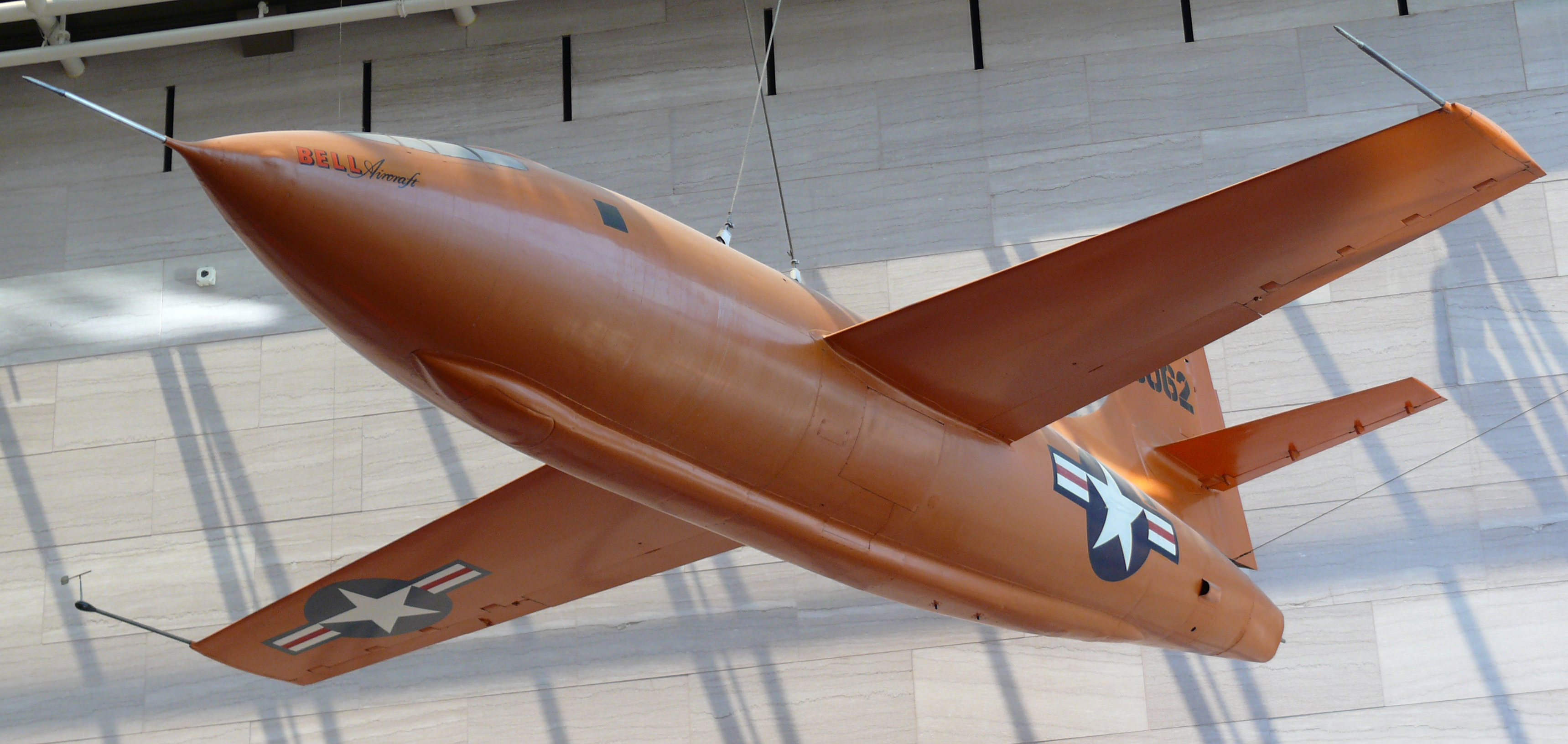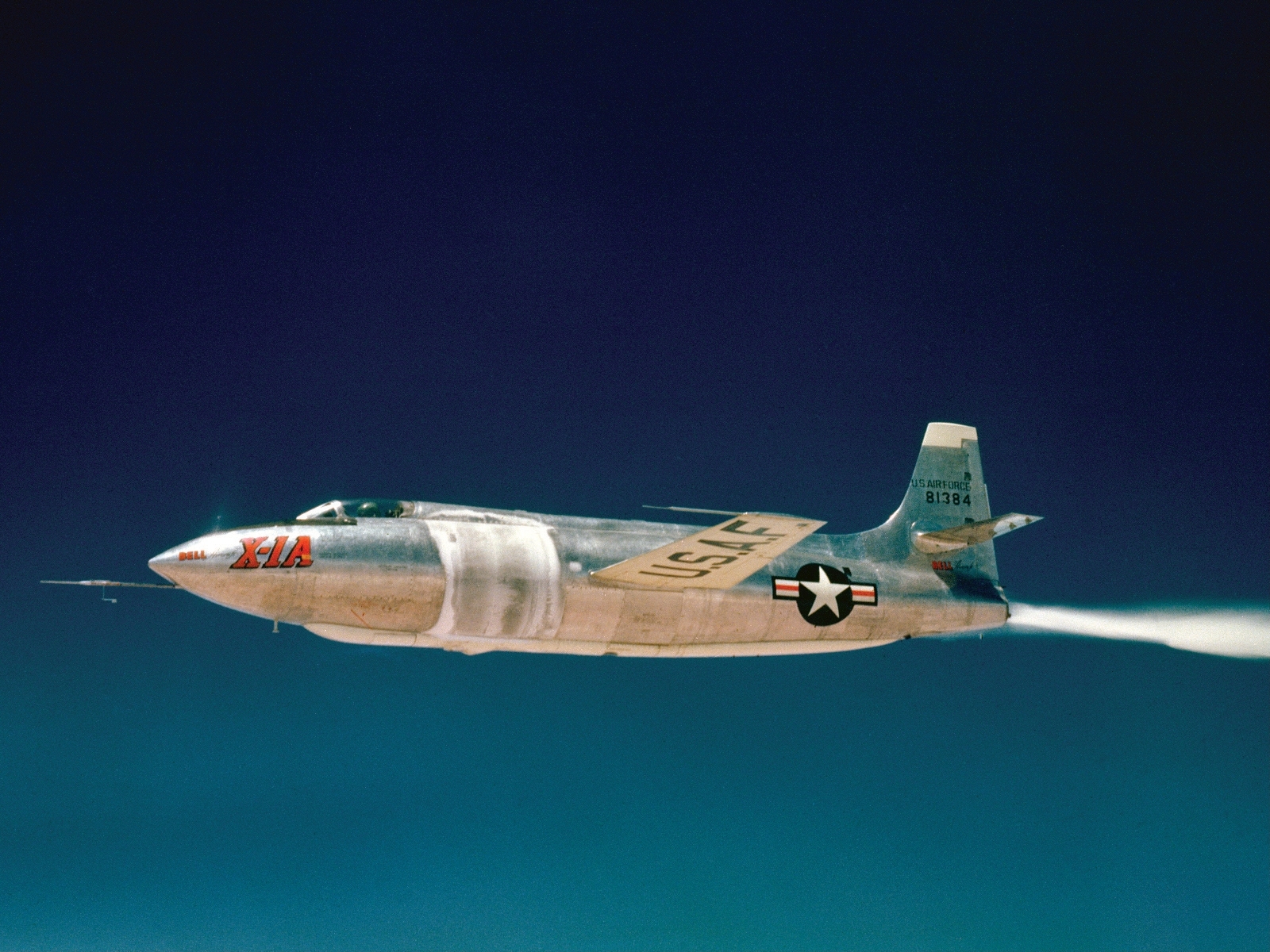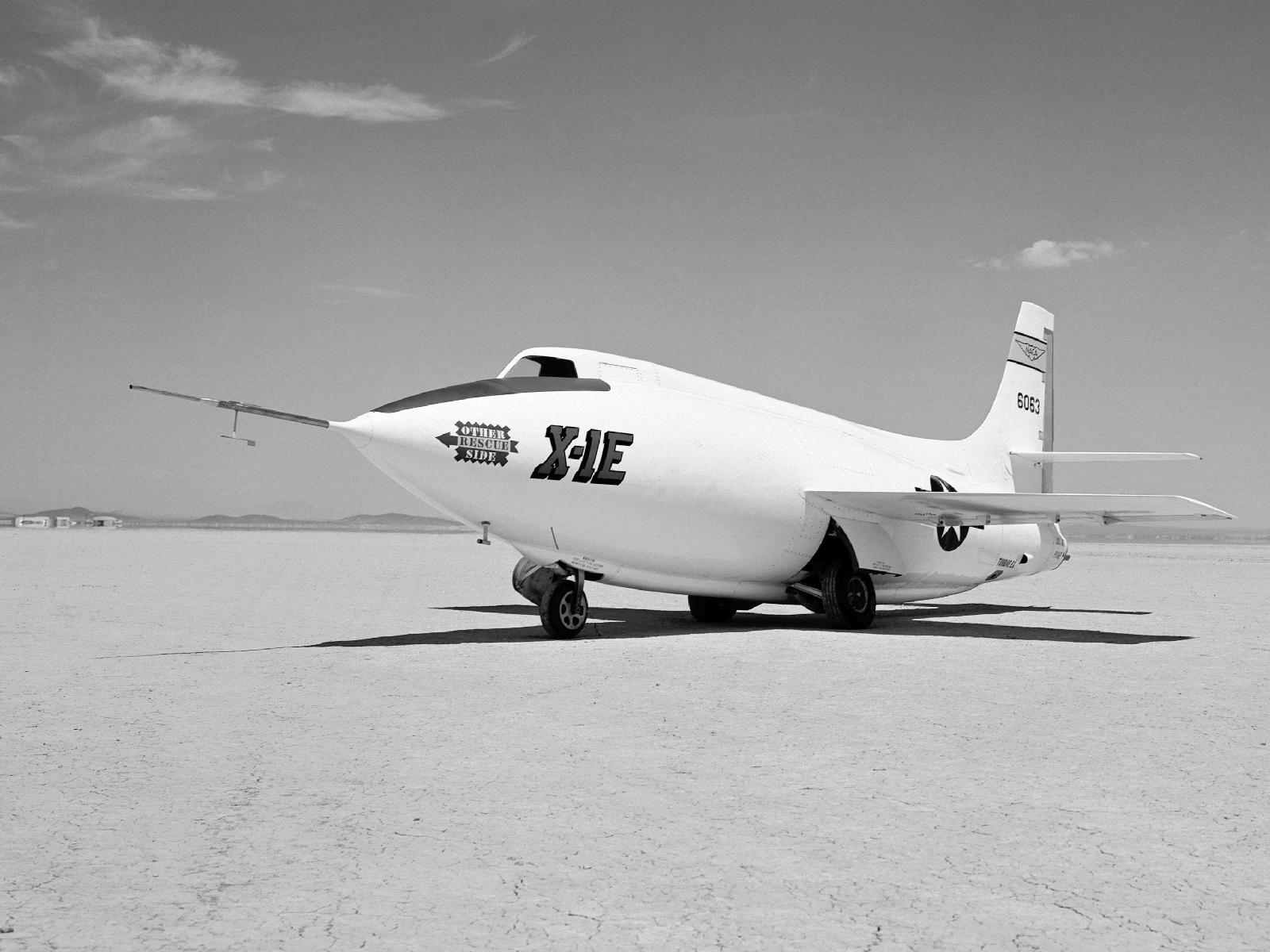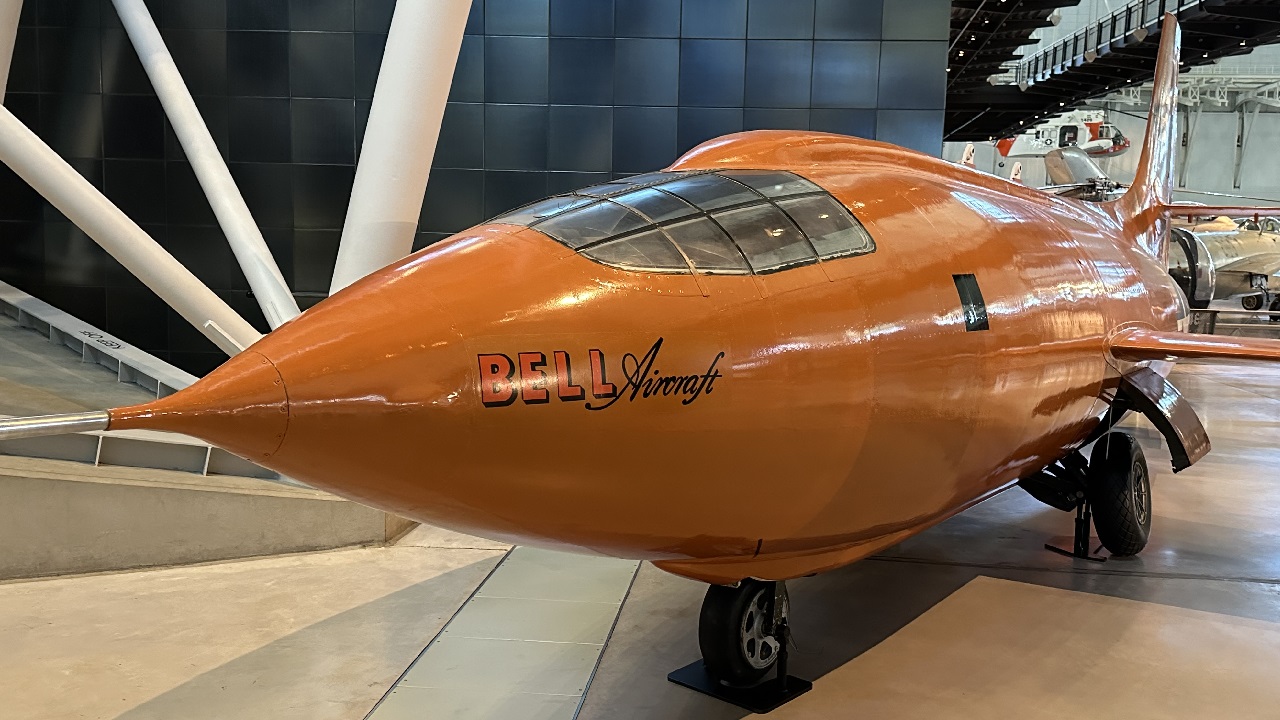
Bell X1 Wikiwand
Bell X-1, U.S. rocket-powered supersonic research airplane built by Bell Aircraft Corporation, the first aircraft to exceed the speed of sound in level flight.

FileBell X1A in flight.jpg Wikimedia Commons
Bell X-1: Dropping the Orange Beast That Broke the Sound Barrier Numerous books, articles, documentaries and movies have told the story of how famed pilot Chuck Yeager broke the sound barrier. Here's the story behind the team and aircraft that made that possible by Mark Carlson 10/14/2021

6 November 1958 Final Flight of the X1 Rocketplane Program Niagara Aerospace Museum
The Bell X-1 was the first supersonic jet ever Smithsonian National Air and Space Museum Flying high above the dusty Mojave Desert below him, Captain Charles "Chuck" Yeager of the United States.
.jpg)
How the Bell X1 Earned Its Place in Aviation History The National Interest
The Bell X-1 broke the sound barrier, proving that supersonic flight was possible. The X-1 was unique in design, made from lightweight materials and propelled by a rocket engine. The X-1's legacy continues to inspire innovation in aviation, including the development of the SR-71 Blackbird.

75 Years Ago, The Bell X1 Broke the Sound Barrier (Hitting Mach 1) 19FortyFive
Seventy-five years ago, on October 14, 1947, the Bell X-1 Glamorous Glennis, piloted by U.S. Air Force Captain Charles E. "Chuck" Yeager, became the first airplane to fly faster than the speed of sound (Mach 1). The experimental purpose-built aircraft reached 1,127 kilometers (700 miles) per hour (Mach 1.06).

Bell X1 · The Encyclopedia of Aircraft David C. Eyre
The Bell X-1 was the first piloted plane to fly faster than the speed of sound. Flown by USAF Captain Charles "Chuck" Yeager, the Bell X-1 rocketed to supersonic speeds for the first time on October 14, 1947, over Muroc Air Base in the Mojave Desert. It has a wingspan of 8.5 meters (28 feet) and a length of 9.5 meters (31 feet), with a.

FileBell X1.jpg Wikimedia Commons
The Bell X-1 ( Bell Model 44) is a rocket engine-powered aircraft, designated originally as the XS-1, and was a joint National Advisory Committee for Aeronautics - U.S. Army Air Forces - U.S. Air Force supersonic research project built by Bell Aircraft.

Bell X1 NASA
The Bell X-1 was a rocket-powered aircraft designed by Bell for a supersonic joint research project between the National Advisory Committee for Aeronautics (NACA) and the US Army Air Forces (USAAF), later the US Air Force.

Bell X1B > National Museum of the United States Air Force™ > Display
The Bell X-1 is a rocket engine-powered aircraft, designated originally as the XS-1, and was a joint National Advisory Committee for Aeronautics-U.S. Army Air Forces-U.S. Air Force supersonic research project built by Bell Aircraft. Conceived during 1944 and designed and built in 1945, it achieved a speed of nearly 1,000 miles per hour in 1948. A derivative of this same design, the Bell.

Bell X1 Smithsonian Institution
The Bell X-1 is one of the most significant test aircraft in history since it was the first plane to conclusively break the sound barrier. The X-1 project began in 1944 when the US Army Air Force (USAAF) and the National Advisory Committee for Aeronautics (NACA) agreed on a joint program to investigate the possibility of supersonic flight..
/bell-x-1-large-56a61c545f9b58b7d0dff7a2.jpg)
The Bell X1 and Breaking the Sound Barrier
January 3, 2024 The Bell X-1 rocket plane made history in 1947 as the first aircraft to break the sound barrier in level flight, piloted by the legendary Chuck Yeager. This major milestone opened up the era of practical supersonic flight.

Bell X1 Wikipedia, la enciclopedia libre
1. To conserve fuel, the X-1 was flown up to 7,620 meters (25,000 ft) attached to the bomb bay of a modified Boeing B-29 bomber and then dropped. The Bell X-1 underneath the modified B-29. Photo: NASM-1A08078 2. Yeager named the Bell X-1 Glamorous Glennis after his first wife. Yeager in the cockpit of Glamorous Glennis. Photo: NASM-98-15403 3.
Bell X1 National Air and Space Museum
Summary On October 14, 1947, the Bell X-1 became the first airplane to fly faster than the speed of sound. Piloted by U.S. Air Force Capt. Charles E. "Chuck" Yeager, the X-1 reached a speed of 1,127 kilometers (700 miles) per hour, Mach 1.06, at an altitude of 13,000 meters (43,000 feet).

Bell X1 Bell x 1, Air and space museum, Space museum
The Bell X-1 was a rocket-powered aircraft developed for the National Advisory Committee for Aeronautics and the US Army Air Forces that first flew in 1946. Intended for research into transonic flight, the X-1 became the first aircraft to break the sound barrier.
.jpg)
Bell X1 Wikiwand
A joint project of NACA and the U.S. Army Air Forces, built by Bell Aircraft of Buffalo, New York, the X-1 reached a speed of 700 miles per hour that bright day, Mach 1.06 at an altitude of.

FileBell X1 Experimental Plane at the Smithsonian Museum 2004.jpg Wikimedia Commons
Summary On October 14, 1947, the Bell X-1 became the first airplane to fly faster than the speed of sound. Piloted by U.S. Air Force Capt. Charles E. "Chuck" Yeager, the X-1 reached a speed of 1,127 kilometers (700 miles) per hour, Mach 1.06, at an altitude of 13,000 meters (43,000 feet).